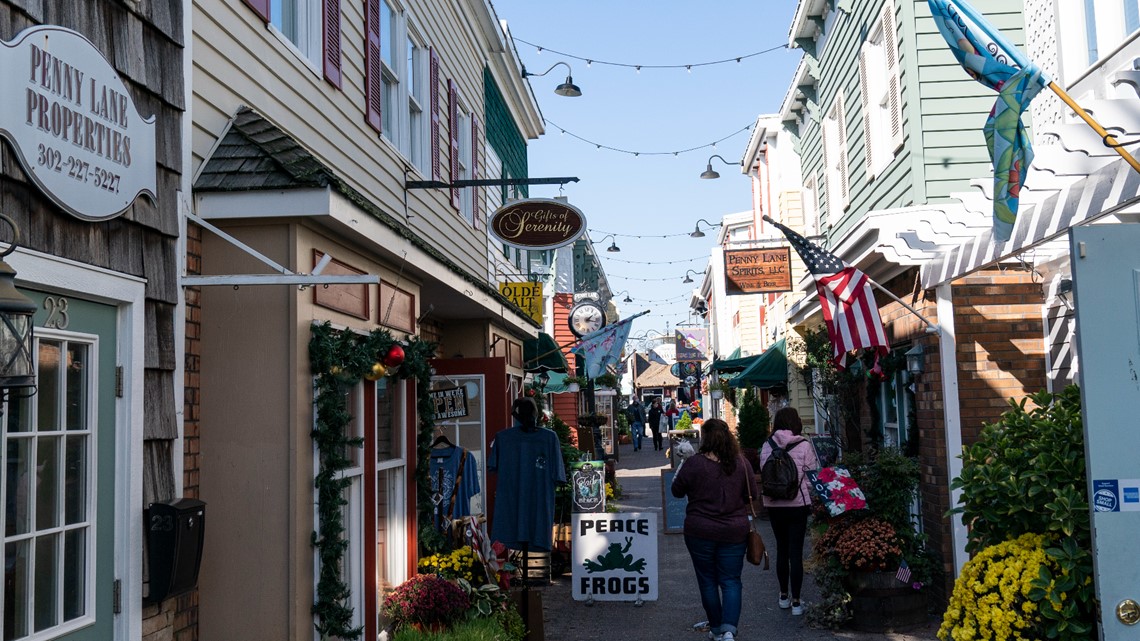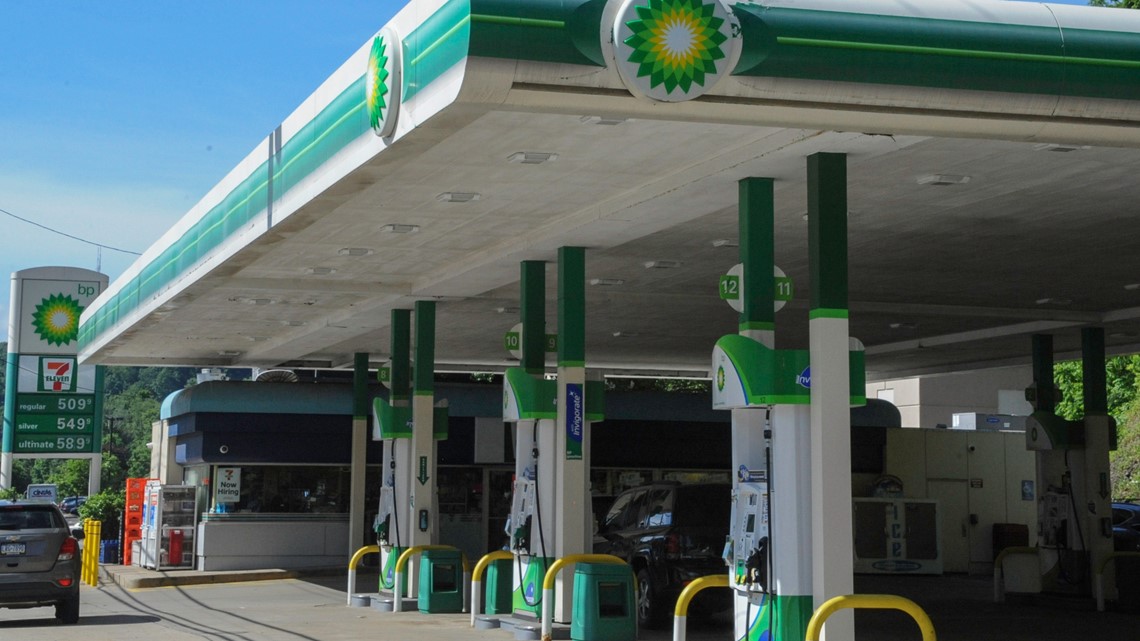WASHINGTON — The cost of gas, food and most other goods and services jumped in May, pushing inflation to a four-decade high and offering Americans no respite.
Consumer prices surged 8.6% last month from a year earlier, faster than April’s year-over-year increase of 8.3%, the Labor Department said Friday. The new inflation figure, the biggest increase since December 1981, heightens pressure on the Federal Reserve to continue raising interest rates aggressively.
On a month-to-month basis, prices jumped 1% in May, much faster than April's 0.3% rise. So-called “core” inflation, a measure that excludes volatile food and energy prices, climbed 0.6% for a second straight month and are now 6% above where they were a year ago.
Friday's report underscored fears that inflation is spreading beyond energy and goods whose prices are being driven higher by clogged supply chains and Russia's invasion of Ukraine. If the Fed becomes more aggressive in combating inflation with rate hikes, it will mean higher-cost loans for families and businesses, and raises the risk of recession.
“Virtually every sector has higher-than-normal inflation,” said Ethan Harris, head of global economic research at Bank of America. “It's made its way into every nook and cranny of the economy. That's the thing that makes it concerning, because it means it's likely to persist.”
Gas prices rose 4% just in May and have soared nearly 50% in one year. The national average price at the pump reached $4.99 Friday, according to AAA, edging closer to an inflation-adjusted record high of $5.40.
Grocery costs surged nearly 12% from a year earlier, the biggest such increase since 1979. Rising prices for grain and fertilizer in the wake of the Ukraine invasion, is intensifying that rise. Restaurant prices jumped 7.4% in the past year, the largest 12-month gain since 1981. Owners are also facing immense pressure to raise wages in a heated job market.
Housing costs are still climbing. The government's shelter index, which includes rents, hotel rates and a measure of what it costs to own a home, increased 5.5% in the past year, the most since 1991. Airline fares are up nearly 38% in the past year, the sharpest such rise since 1980.
Rampant inflation is imposing severe pressures on families. Lower-income and Black and Hispanic Americans in particular are struggling because, on average, a larger proportion of their income is consumed by necessities.
There have been signs inflation might be moderating, particularly for goods caught up in supply chain snarls and shortages. That trend appeared to reverse in May, with used car prices rising 1.8% after falling for three straight months. New car prices also rose. Clothing costs also reversed course, and rose in May.


In light of Friday's inflation reading, the Fed is all but certain to carry out the fastest series of interest rate hikes in three decades. By sharply raising borrowing costs, the Fed hopes to cool spending and growth enough to curb inflation without tipping the economy into a recession. For the central bank, it will be a difficult balancing act.
Fed Chair Jerome Powell has signaled that the Fed will double the size of a typical hike next week, and again in July, meaning half-point jumps. Some had held out hope that the Fed would then dial back rate increases in September, or even pause its credit tightening.
But with inflation raging, economists increasingly expect a third half-point hike in the fall, which would be its fourth since April.


Surveys show that Americans see high inflation as the nation’s top problem, and most disapprove of President Joe Biden’s handling of the economy. Congressional Republicans are hammering Democrats on the issue in the run-up to midterm elections this fall.
Biden plans to address inflation later Friday in a speech at the Port of Los Angeles, which is moving a record amount of cargo around the clock under an agreement the White House shepherded. Yet even as the number of ships waiting to unload at the port has fallen sharply, inflation has not.
Rocky Harper of Tucson, Arizona, has had to start doing gig work for delivery companies, on top of his regular full-time job with a package delivery service. His main job pays $800 a week, he said, which “used to be really good money and is now just above dirt-poor.”
Harper, 43, said he and his fiancée are postponing their wedding because they can’t afford it. They’ve cut off Netflix and Hulu. His car’s catalytic converter was stolen recently — an increasingly common crime due to the soaring costs of rare metals they contain. A repair cost $1,300.
“With the food, gas and rent — holy cow,” Harper said. “I’m working a massive amount of overtime, just to make it, just to keep it together.”
A report from the World Bank this week made clear that high inflation is a global problem that threatens to slow economies around the world.
For the 19 countries that use the euro currency, inflation fueled by rising food and fuel prices hit a record 8.1% last month, leading the European Central Bank to announce Thursday that it will raise interest rates for the first time in 11 years, starting in July and again in September.
In the coming months, prices in the United States may ease somewhat. Many large retailers, including Target, Walmart and Macy’s, are now now stuck with too much of the patio furniture, electronics and other goods that suddenly are no longer in demand. This week, Target said it is cutting prices due to mounds of unsold inventory.
Americans have soured on the economy yet have largely kept up their spending, even if through gritted teeth.
Wages are not rising as fast as inflation, but they are still increasing at the fastest pace in several decades,. And many households — including lower-income ones — accumulated savings from government support payments during the pandemic. They're now drawing on those savings to keep up with higher prices.
Americans are also increasingly turning to credit cards, with total credit card debt rising sharply in April, the Federal Reserve reported earlier this week, though it has only barely surpassed pre-pandemic levels.
How long these trends — higher wages, extra savings, and rising credit card debt — can enable Americans to keep spending will be a key factor in determining the chance of a recession. To cool inflation, spending growth must be slowed.
For lower-income Americans, there are signs it already is. Sales are slowing at retailers that cater to budget-conscious shoppers, such as dollar stores. Walmart said customers are trading down to cheaper items.
Research by the Bank of America Institute, which uses anonymous data from millions of their customers’ credit and debit card accounts, shows gasoline eating up a larger share of budgets.
For lower-income households — defined as those with incomes below $50,000 — spending on gas reached nearly 10% of all spending on credit and debit cards in the last week of May, the institute said this week. That’s up from about 7.5% in February, a steep increase in such a short period.
Many small businesses are still struggling to keep up with rising costs for supplies and labor, a sign price hikes will continue. Andrew McDowell, founder of the With Love Market and Cafe in Los Angeles, said he is paying more for food supplies, workers, and even for reusable bags, which used to cost him 23 cents but now cost 45 cents.
The company’s chicken BLT now costs 20% more than it did before the pandemic. McDowell said he is still grappling with the highest prices for supplies and workers he has ever faced. He is planning an audit of all his costs and menu prices and expects he may have to rise prices again, by 10% to 20%.
“Every product is impacted, every aspect of the business is affected,” McDowell said.

